The 1N4148 Diode: A Guide Beyond Basic Switching (Not a Zener)
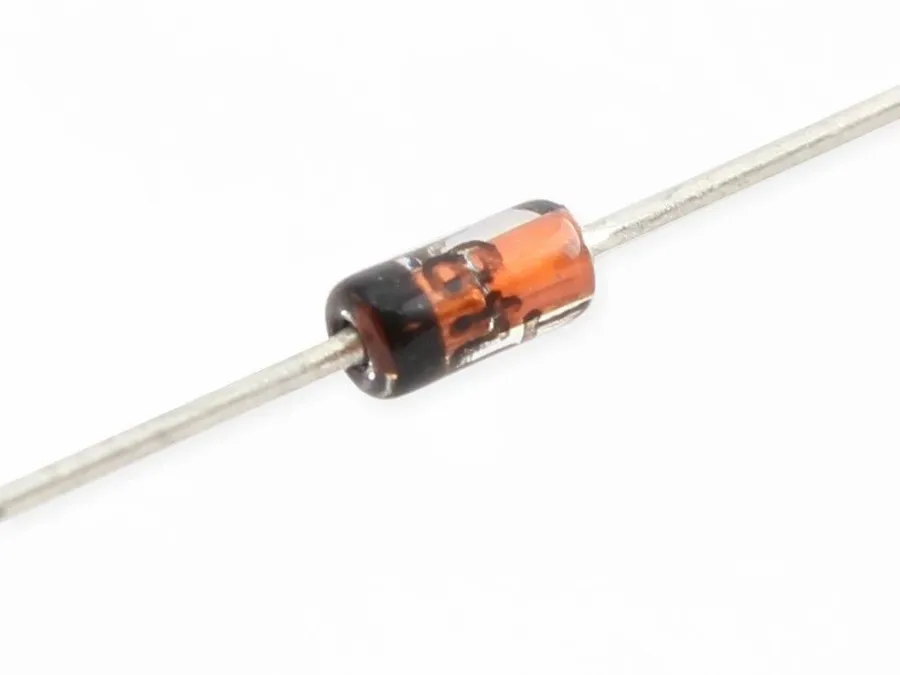
The 1N4148 diode is a foundational component in many electronic circuits. Often confused with a Zener diode because of its similar appearance, the 1N4148 is specifically engineered for fast switching applications. This article delves into the intricacies of the 1N4148, explores its specifications, and clarifies its unique role in signal processing and more, highlighting its differences from zener diodes.
Introduction to the 1N4148 Diode: Switching Powerhouse

The 1N4148 is a ubiquitous silicon epitaxial planar diode, renowned for its fast switching capabilities and widespread use in various electronic circuits. It is specifically designed for high-speed switching applications and should not be confused with Zener diodes, which serve a fundamentally different purpose in voltage regulation. This distinction is crucial for proper circuit design and function.
Technical Specifications of the 1N4148 Diode
The 1N4148 is a silicon epitaxial planar diode characterized by its fast switching speed and relatively low forward voltage drop. Understanding its technical specifications is crucial for effective circuit design and application.
| Parameter | Typical Value | Unit | Conditions |
|---|---|---|---|
| Forward Voltage (Vf) | 0.7 - 1.0 | V | If = 10mA |
| Reverse Current (Ir) | <= 5 | nA | Vr = 20V |
| Reverse Recovery Time (trr) | <= 4 | ns | If=10mA, Ir=10mA, recovery to 1mA |
| Maximum Forward Current (If) | 0.2 | A | Continuous |
| Peak Forward Surge Current (Ifsm) | 1.0 | A | Pulse width of 1 µs |
| Maximum Reverse Voltage (Vr) | 100 | V | Continuous |
| Operating Junction Temperature (Tj) | -65 to +175 | °C | Operating range |
It is important to note that the values provided above are typical and may vary based on manufacturing and environmental conditions. Always consult the manufacturer's datasheet for precise values pertaining to a specific batch or part. These parameters are typically tested at 25°C unless otherwise noted, and designers should account for temperature variations in practical applications. The forward voltage drop tends to increase slightly with temperature and current, while the reverse leakage current increases more significantly at elevated temperatures.
1N4148 vs. Zener Diodes: Functional Differences
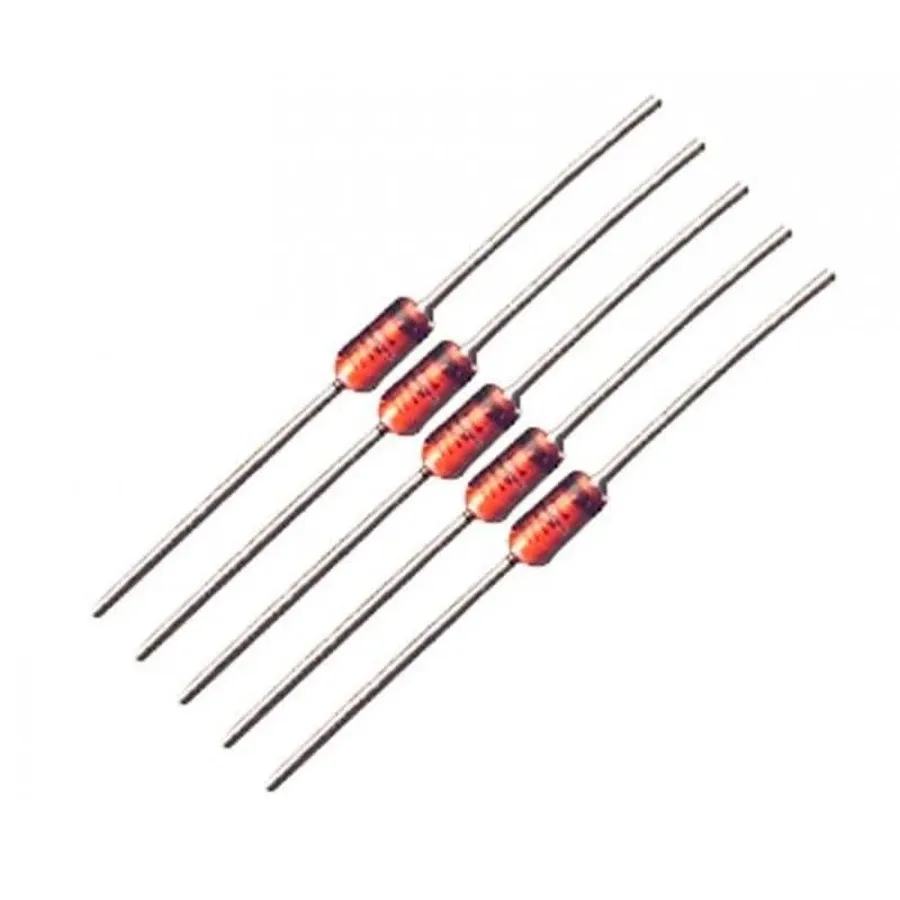
The 1N4148 and Zener diodes, while both being semiconductor diodes, exhibit fundamentally different operational characteristics and are thus employed in distinct circuit applications. The 1N4148 is primarily a fast switching diode used for signal rectification and general switching purposes, whereas a Zener diode is specifically engineered to conduct current in reverse bias once a specific reverse voltage is reached, making it ideal for voltage regulation.
| Feature | 1N4148 Diode | Zener Diode |
|---|---|---|
| Primary Function | Fast Switching, Signal Rectification | Voltage Regulation, Voltage Reference |
| Operating Region | Forward Bias Conduction, Minimal Reverse Bias Current | Forward Bias Conduction, Controlled Reverse Bias Breakdown |
| Reverse Bias Behavior | Blocks Current Flow | Conducts at a Specific Reverse Voltage (Zener Voltage) |
| Construction | Optimized for Low Forward Voltage Drop and Fast Recovery | Optimized for Precise Breakdown Voltage |
| Typical Applications | Signal processing, logic circuits, general switching | Voltage regulators, overvoltage protection, voltage references |
| Breakdown Voltage | Very high, ideally does not breakdown in normal operation | Precisely defined for Voltage Regulation |
| Temperature Coefficient | Generally low | Can be significant, can vary across different Zener diode types |
Diverse Applications of the 1N4148
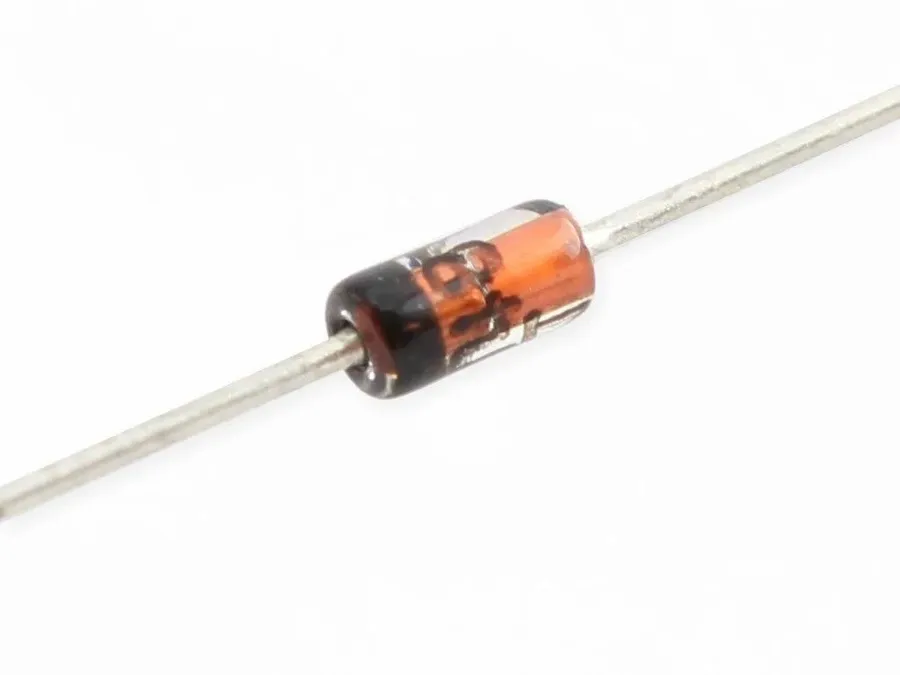
The 1N4148 diode, while not a Zener diode, is incredibly versatile and finds application in numerous electronic circuits, primarily due to its fast switching speed and reliable performance as a general-purpose rectifier. This adaptability makes it a cornerstone component in various designs where precise signal processing and switching are crucial.
Let's explore its key applications:
- Signal Rectification:
One of the most common uses of the 1N4148 is in signal rectification. It's adept at converting AC signals into DC signals, a fundamental process in power supplies and signal processing circuits, often utilized in smaller-scale applications where its low forward voltage drop is advantageous. - Logic Gates:
The 1N4148 is frequently employed in the construction of various logic gates, such as AND and OR gates. Its ability to quickly switch between conducting and non-conducting states is key to creating these fundamental digital building blocks. The diode's fast recovery time makes it suitable for high-speed digital circuits. - Protection Circuits:
Its reverse polarity protection prevents damage from accidental misconnections, acting as a safeguard against current flowing in the reverse direction to protect sensitive components in circuits. While it doesn't provide overvoltage protection like a Zener, it's effective at stopping reverse current. - Free-Wheeling Diode Applications:
When dealing with inductive loads, the 1N4148 is used as a free-wheeling diode, preventing voltage spikes that can occur when an inductive circuit is suddenly opened. This helps maintain circuit integrity. - Wave Shaping Circuits:
The diode is a versatile tool for manipulating waveforms, for example in clipping circuits. Its precise cut-off characteristic is crucial for ensuring signal integrity in analog signal processing. It can clip away the unwanted portions of a signal.
How to Visually Identify the 1N4148 Diode
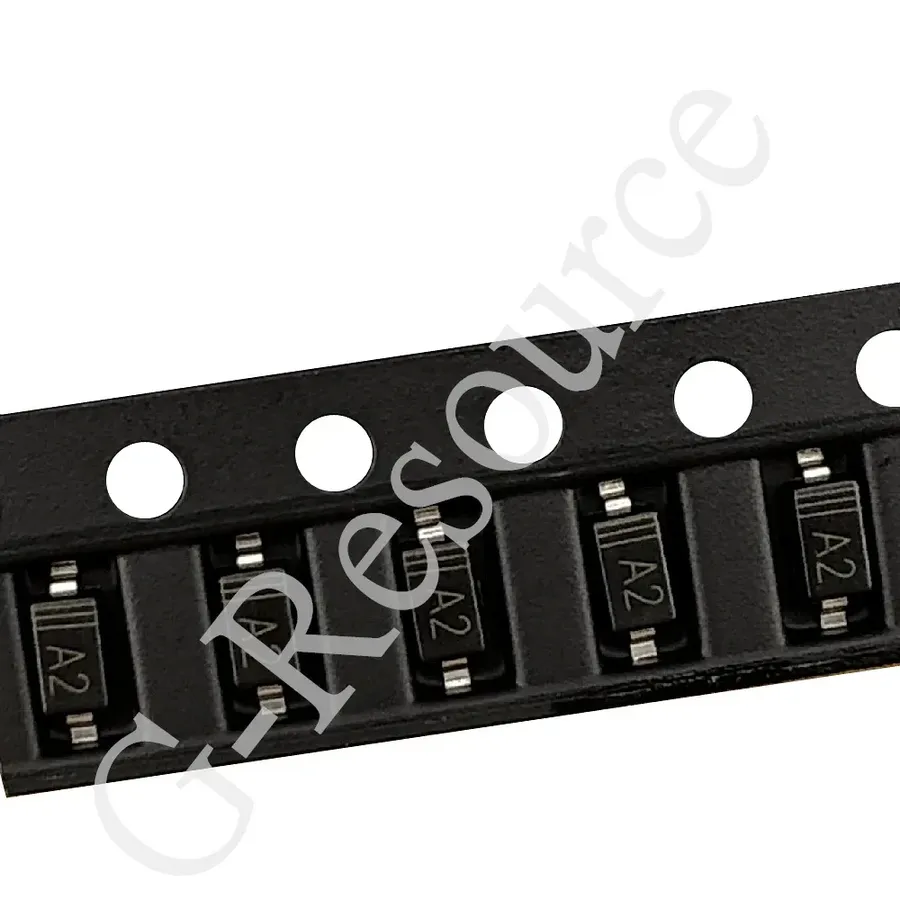
Visually identifying the 1N4148 diode is straightforward, essential for correct circuit implementation. Key identifiers include its cylindrical body, typically made of glass or plastic, and a prominent black band near one end. This band acts as a polarity indicator, signifying the cathode side of the diode.
The 1N4148 is typically a small axial leaded component, with its leads extending from either end. The body color is usually clear, allowing some of the internal structure to be visible, but this can vary among manufacturers. The dimensions are also characteristic; the 1N4148 is typically around 5-7 mm in length and around 2-3mm in diameter.
- Cylindrical Body
The diode has a cylindrical shape, often made of glass or plastic, and may have a slightly transparent or colored appearance. - Black Band (Cathode Indicator)
The most crucial visual identifier is the black band located near one end. This band indicates the cathode side of the diode, which is the negative terminal, and it must be connected to the negative or lower potential side of the circuit in proper operation. - Axial Leads
The 1N4148 features axial leads, which are wires extending from each end of the cylindrical body that are used for circuit connections.
Reading and Interpreting the 1N4148 Datasheet
The 1N4148 datasheet is the definitive source for understanding its operational characteristics. A thorough comprehension of the datasheet ensures proper application of the 1N4148 diode in circuit design. The datasheet provides crucial parameters that define the diode's behavior under various conditions. This section explains how to decipher these key specifications.
Key parameters include the forward voltage (Vf), reverse current (Ir), maximum repetitive peak reverse voltage (VRRM), and power dissipation. Each parameter plays a vital role in the diode's performance and reliability. Understanding their interplay is critical for effective circuit design.
- Forward Voltage (Vf)
This parameter indicates the voltage drop across the diode when it is forward biased (conducting). Typically, the 1N4148's Vf is around 0.6 to 1.0 volts, depending on the current. Higher current levels will result in a higher forward voltage drop. - Reverse Current (Ir)
This is the leakage current flowing through the diode when it is reverse biased (not conducting). Ideally, this should be very small. Datasheets typically specify this at a certain reverse voltage and temperature, usually in the microampere range. - Maximum Repetitive Peak Reverse Voltage (VRRM)
This is the maximum reverse voltage that the diode can withstand repeatedly without damage. Exceeding this voltage may lead to diode failure. For the 1N4148, the VRRM is typically around 100V. - Power Dissipation (Pd)
This indicates the maximum power the diode can dissipate as heat without damage. This parameter depends on the operating temperature and is crucial for reliable operation. The datasheet usually provides derating curves to factor in higher temperature operations. - Junction Temperature (Tj)
This parameter shows the maximum allowed temperature for the diode junction and is crucial for thermal management and is typically around 175-200°C. Operating the diode above the specified Tj can lead to damage. - Reverse Recovery Time (trr)
This is the time it takes for the diode to stop conducting after switching from a forward biased condition to a reverse biased condition. The 1N4148 is known for its fast trr, typically around 4ns, making it suitable for high speed switching applications.
The datasheet also provides curves illustrating the diode's behavior under different operating conditions, such as the relationship between forward current and forward voltage, or how the reverse current varies with temperature. These curves provide a deeper insight into the diode's operational range.
By carefully reviewing the 1N4148 datasheet, engineers can design reliable and efficient circuits, understanding the component’s limitations and ensuring they operate within safe operating parameters. Proper interpretation of the datasheet is key to the successful implementation of the 1N4148 in a variety of applications, from signal rectification to logic gate circuits and protection mechanisms.
Frequently Asked Questions About 1N4148 Diode
This section addresses common questions regarding the 1N4148 diode, clarifying its usage, characteristics, and differences from other diodes like Zener diodes. Understanding these nuances is crucial for effective circuit design and troubleshooting.
- What is the primary function of a 1N4148 diode?
The 1N4148 is primarily used as a fast-switching diode. Its main function is to allow current to flow in one direction while blocking it in the opposite direction, which is crucial for signal rectification and various switching applications. - Is the 1N4148 a Zener diode?
No, the 1N4148 is not a Zener diode. It's a general-purpose silicon switching diode. Zener diodes are specifically designed to operate in reverse breakdown for voltage regulation, while the 1N4148 is designed to block reverse current and operate primarily in forward bias. - What is the typical forward voltage drop of a 1N4148 diode?
The forward voltage drop of a 1N4148 diode is typically around 0.7V when conducting. This value can vary slightly depending on temperature and forward current. - What does the black band on a 1N4148 diode indicate?
The black band on the 1N4148 diode signifies the cathode end of the diode. This is the end where current flows *out* when the diode is forward-biased. Correct polarity is crucial when implementing the diode in a circuit. - What are some common alternatives to the 1N4148 diode?
Common alternatives to the 1N4148 include the 1N914 and other similar fast switching diodes. The specific alternative chosen depends on circuit requirements like forward current and switching speed. Always check the datasheet for specific parameters. - What is the reverse recovery time of a 1N4148 diode?
The reverse recovery time of the 1N4148 is typically very short, in the order of nanoseconds. This characteristic makes it suitable for high-speed switching applications, where a quick transition from conducting to blocking is essential. - Can a 1N4148 diode be used for voltage regulation?
No, the 1N4148 is not suitable for voltage regulation. Zener diodes are specifically designed for this purpose as they operate in reverse breakdown mode to maintain a relatively constant voltage. The 1N4148, when reverse biased, will block current up to its maximum reverse voltage limit.
Best Practices for Implementing 1N4148 in Circuits
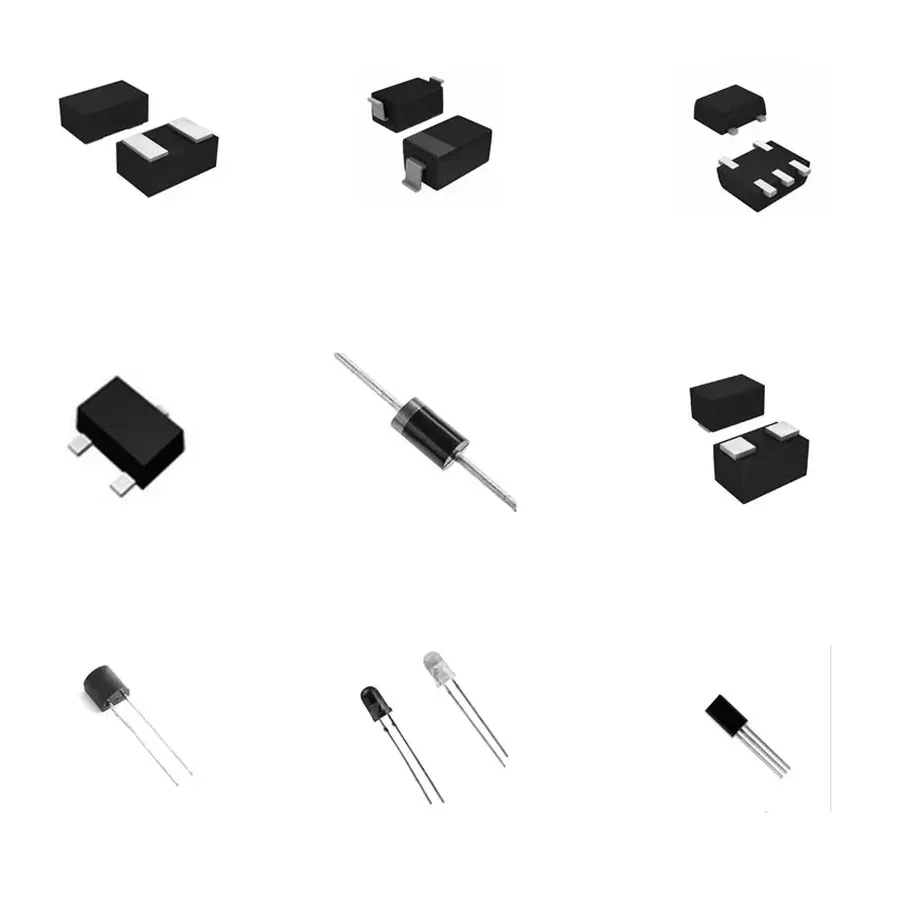
The 1N4148 diode, while not a Zener diode, is a highly reliable and efficient switching diode that requires careful consideration in circuit design to ensure optimal performance. Employing best practices not only enhances circuit reliability but also maximizes the diode's lifespan. This section provides practical guidelines for effective implementation.
- Current Limiting
Always include a current-limiting resistor in series with the 1N4148, especially when it's used in forward bias mode. This is essential to prevent overcurrent damage to the diode and the circuit, based on Ohm's Law. - Thermal Management
While the 1N4148 is not a high-power device, excessive current can lead to heat generation. Ensure adequate ventilation or heat sinking, particularly in high-frequency switching applications. Use the datasheet to determine the maximum permissible power dissipation. - Proper Orientation
The 1N4148 is a polarized device. The black band on the diode indicates the cathode. Ensure correct orientation to avoid circuit malfunction and potential damage. A reversed connection may result in the diode conducting in the reverse direction, contrary to its design. - Datasheet Adherence
Always consult the 1N4148 datasheet for precise specifications like forward voltage drop, reverse current, and maximum ratings. Operating beyond these limits can damage the component. The datasheet also provides insight into temperature effects on the performance. - Signal Integrity
When used in high-speed signal processing circuits, minimize lead lengths and use proper grounding techniques to avoid parasitic inductances and capacitances. These can cause signal degradation and distortion, affecting circuit performance. - ESD Protection
Like all semiconductor devices, the 1N4148 is sensitive to Electrostatic Discharge (ESD). Employ proper ESD handling procedures, such as using grounded wrist straps and conductive mats, to prevent component damage. Failure to do so can lead to latent damage affecting long-term reliability. - Circuit Simulation
Prior to physical implementation, thoroughly simulate the circuit to test its behavior under different conditions, this will help to verify that the 1N4148 operates within its specified parameters and identify potential design flaws early in the process. Consider variations in temperature and component tolerances.
Table: 1N4148 vs. Zener Diode Comparison Chart
A direct comparison between the 1N4148 diode and a Zener diode clarifies their distinct operational characteristics and applications. The 1N4148 is designed primarily for switching and signal rectification, whereas the Zener diode is specifically engineered for voltage regulation and protection. This section provides a tabular summary of their key differences.
| Feature | 1N4148 Diode | Zener Diode |
|---|---|---|
| Primary Function | Fast Switching, Signal Rectification | Voltage Regulation, Overvoltage Protection |
| Operating Region | Forward bias (Conducts current) | Reverse bias (Conducts when breakdown voltage is reached) |
| Forward Voltage Drop | ~0.7V (Silicon) | ~0.7V (Silicon) - Similar to standard diodes in forward bias |
| Reverse Breakdown | High (Typically > 75V) | Controlled, specific breakdown voltage (Vz) |
| Construction | General-purpose silicon diode | Specially doped silicon diode |
| Symbol | Standard Diode Symbol | Modified Diode Symbol with 'kinked' cathode |
| Typical Applications | Signal processing, switching circuits, freewheeling diode | Voltage references, surge protection, clipping |
| Voltage Sensitivity | Relatively insensitive to reverse voltage below breakdown | Highly sensitive to reverse voltage near breakdown, used in that region |
The 1N4148 diode, though appearing simple, is powerful. It is used in numerous circuits due to its quick switching and reliability. Understanding its specs, applications, and the crucial distinction from a Zener diode will help ensure its effective use in circuit projects. This article will enable better circuit designs in your electronics work.
 AnyPCBA
AnyPCBA